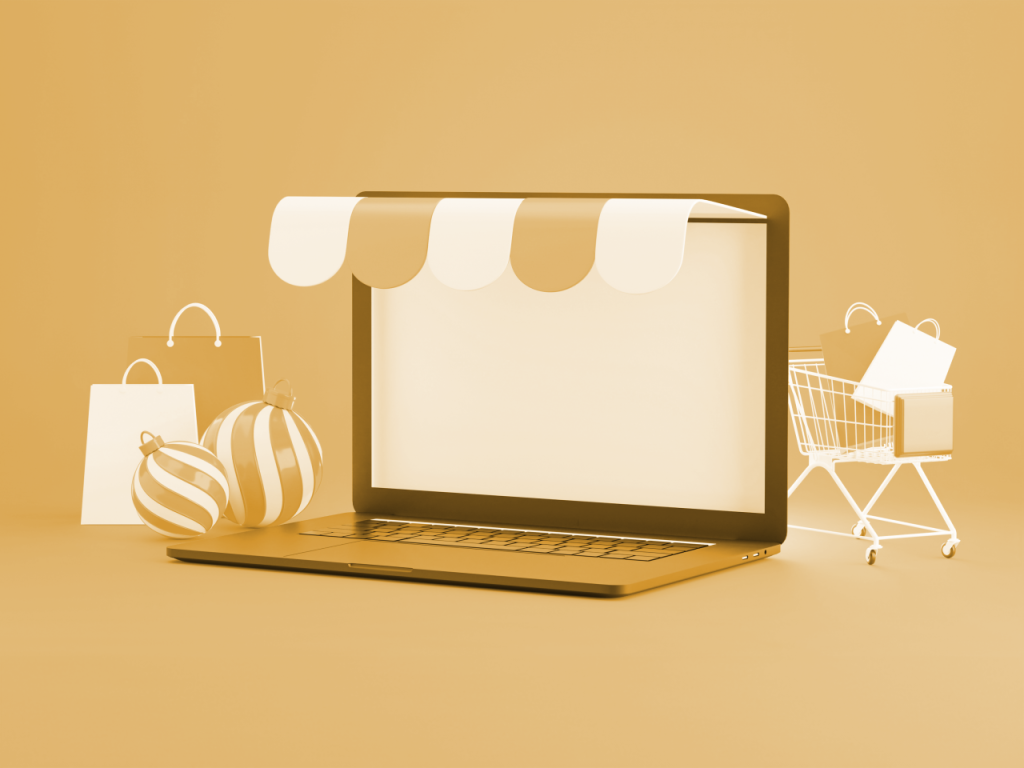Hyper-personalization is proving to be a game-changer for e-commerce businesses. 60% of people continue to shop from brands that provide personalized experiences.
The Impact of Personalization in Various Industries
Personalization has taken various industries by storm.
In e-commerce, personalized product recommendations result in increased conversion rates and customer satisfaction.
For instance, Amazon’s personalized recommendations make up 35% of their sales (source: McKinsey). Successful personalization is also seen in streaming services like Netflix and Spotify, which offer personalized content suggestions based on user preferences and history. Netflix’s personalized algorithm saves the company approximately $1 billion annually by reducing customer churn (source: Netflix Paper).
Benefits of Personalization on your Shopify Store
Ever walked into a Sephora store & loved how the beauty experts recommend products that are just right for your skin type & needs? That kind of personalization makes customers want to buy more. There’s no reason why you can’t create a similar experience for your online store. Here are some clear benefits.
Increased Conversion Rates:
Imagine your store as a digital personal shopper that handpicks items based on a customer’s preferences, just like Stitch Fix does with clothing. By offering personalized content and recommendations, you create a shopping experience that feels tailor-made for each customer, leading to higher conversion rates.

Increased Average Order Value (AOV):
Personalization also leads to higher AOV by providing relevant upsells, cross-sells, and bundle deals. Amazon’s “Frequently Bought Together” feature encourages customers to add related items to their cart, increasing their overall purchase amount. Similarly, a skincare brand could suggest complementary products, like a moisturizer and sunscreen, to customers who have added a cleanser to their cart. By offering personalized suggestions, customers are more likely to discover and purchase additional items, ultimately boosting your store’s AOV.

Enhanced customer retention and lifetime value (LTV):
Ever noticed how Netflix keeps you hooked with its personalized content suggestions? Similarly, when a user returns to your website after making a purchase a few days ago, they’re looking for something new and fresh. By understanding the type of users visiting your store and offering them tailored products and experiences, you can boost repeat transactions and LTV.
Better Marketing Efficiency:
Personalization based on demographics, such as location, gender, age, and weather, can be powerful. For instance, during a Black Friday campaign, a clothing brand could show styles suitable for warmer Los Angeles weather to customers from that region, while promoting cozy winter wear for those in chilly New York. By tailoring campaigns to customers’ needs, they’re more likely to click and buy, making your marketing efforts much more effective.
Incorporating personalization into your Shopify store can lead to happier customers, increased conversions, and ultimately, a more successful and profitable online store.
Examples of Successful Shopify Brands Using Personalization
Customized homepage experience for new users (Case Study – Arata)
Arata, a brand offering plant-based personal care products, understood the power of personalization and decided to give their new users a warm welcome. By displaying personalized banners tailored to new visitors, Arata created a unique and engaging first impression that encouraged customers to explore and shop.
The result? Arata saw a remarkable 72% increase in conversion rates, all thanks to using this personalized approach. By catering to the needs and preferences of their new users, Arata was able to enhance the customer experience and drive impressive growth.
Winning back cart abandoners with the right nudges (Case Study – Duroflex)
Cart abandonment can be a real headache for online retailers. But, Duroflex, a well-known mattress and sleep accessories brand, decided they weren’t going to let it get the better of them. They came up with a clever plan – personalized banners aimed at those who had abandoned their carts.
Duroflex won back many customers by reminding them of the items they left behind and offering personalized incentives. The result? A 2.4x increase in engagement compared to their other communication channels. This proves that a personal touch can effectively recover lost sales from abandoned carts.

Personalized product recommendations (Case Study – Dermalogica)
Dermalogica, a popular skincare brand on Shopify, used personalized product suggestions to improve its customer experience. They provided their visitors with custom product ideas based on what customers browsed, liked, and bought before. An impressive 10% of Dermalogica’s orders come directly from these AI-powered product suggestions.

Simple Personalization tactics to Instantly Enhance your Conversion Rate and boost AOV
You might be wondering, “How can I quickly improve my store’s personalization without breaking the bank or spending endless hours on complex strategies?” Here are some simple yet effective personalization hacks that will not only create a delightful shopping experience for your customers but also give your conversion rates and AOV a sweet lift:
- Dynamic Content and Promotions: Let’s add some excitement to your promotions by making them truly relevant to each visitor. Customize banners with limited-time offers on product categories that your visitor has shown interest in, or entice customers browsing high-ticket items with a special discount code. Your promotions will become irresistible, and your conversion rates will soar, by up to 65% even! (source: Segmentify)
- AOV Boosters: Add sections like “Frequently Bought Together” or “You Might Also Like” on your cart pages. By showcasing complementary products, you increase the chances of customers adding more to their cart, driving up your average order value. It’s a win-win!
- Tailored Product Sections: Enhance your website by including special sections like “Best Sellers” or “New Collection.” Better yet, customize which users see each section. For example, display your latest arrivals to returning customers and feature best-selling items for first-time visitors. There you go! Your store becomes more attractive and personalized to each user’s preferences.
- Personalized Exit-Intent Popups: Let’s face it, we’ve all been tempted by those last-minute offers just when we’re about to leave a website. Why not use that same magic for your store? Spice up your customer’s shopping experience with personalized exit-intent popups. These nifty little tools can detect when a visitor is about to leave your site and display a customized offer they’ll find hard to resist. According to OptinMonster, personalized exit-intent pop-ups can recover up to 53% of abandoning visitors and increase conversions by 10%.
There you go! Use these easy personalization tips to make shopping more fun and meaningful for your customers. What will you get? Better sales, larger orders, and a closer connection with your customers. Try these tips and see your store grow!
Measuring the Impact of Personalization
You’ve applied great personalization strategies, and now you might be thinking, “Are they working?” Here’s how to find out. Follow these three steps to measure the impact of your personalization efforts and make sure you’re headed in the right direction:
Tracking key performance indicators (KPIs):
Focus on two important numbers – Conversion Rate & Average Order Value
Making your conversion rate and AOV higher can increase your sales. For instance, if you raise your conversion rate from 2% to 3%, your sales go up by 50%. Here’s how: if 10,000 users visit your site and only 200 buy something with an average cost of $100, you’d make $20,000. But with a 3% conversion rate, 300 people would buy, making you $30,000. That’s 50% more!
So, when picking tools or apps, make sure they show these numbers. Seeing these details will help you make better choices, improve your plans, and increase your sales. Always keep an eye on these numbers and compare them to your old ones to see if you’re doing better.
Adjusting your personalization strategies for continuous improvement:
Personalization isn’t a one-time thing; it’s an ongoing process. As you track your KPIs and analyze customer feedback, you’ll discover areas that need tweaking. Feel free to make changes! Remember, Rome wasn’t built in a day, and neither is a perfect personalized shopping experience! Keep iterating and refining your tactics, and you’ll be on your way to creating a store that truly resonates with your customers.
In a nutshell, measuring the impact of personalization is all about tracking the right KPIs, listening to your customers, and continuously improving your strategies. Keep at it, and you’ll soon see the fantastic results of your hard work: higher conversion rates, increased customer loyalty and AOVs, and a store that feels like a second home to your shoppers.
Finally…
Let’s quickly recap the key takeaways:
- Increasing conversion rates: Personalized experiences create a welcoming shopping atmosphere tailored to each customer’s interests, encouraging them to make a purchase.
- Raising average order value (AOV): Highlighting relevant products and offers through personalization results in larger shopping carts and higher revenues.
- Fostering customer loyalty: Providing valued, personalized experiences builds long-term relationships, prompting repeat visits and referrals.
So, what are you waiting for? Go ahead, take the plunge, and start personalizing your store. Enjoy the incredible benefits of increased conversion rates, higher AOV, and a loyal customer base that keeps coming back for more.









